Behringer has shrunk its UB-Xa synth once again, with the launch of the UB-Xa Mini. According to the brand, it delivers “big sound in a small package”.
Behringer released its original UB-Xa in 2023, and it later went on to become the
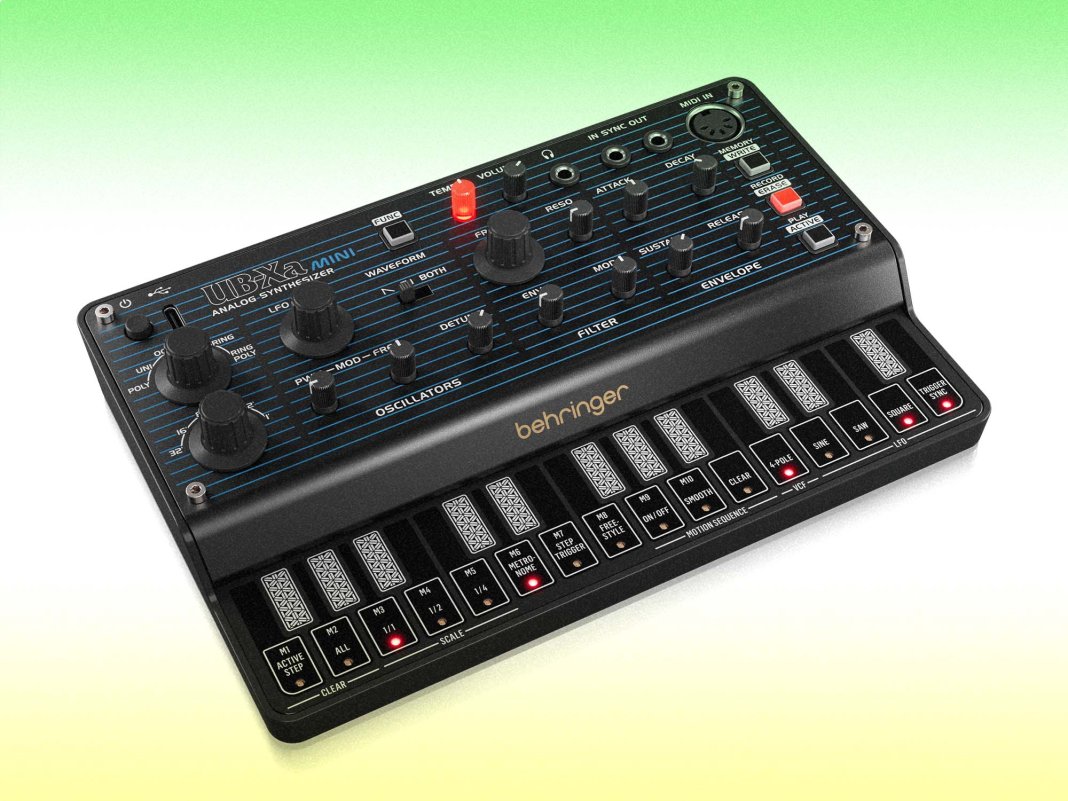
Behringer has shrunk its UB-Xa synth once again, with the launch of the UB-Xa Mini. According to the brand, it delivers “big sound in a small package”.
Behringer released its original UB-Xa in 2023, and it later went on to become the
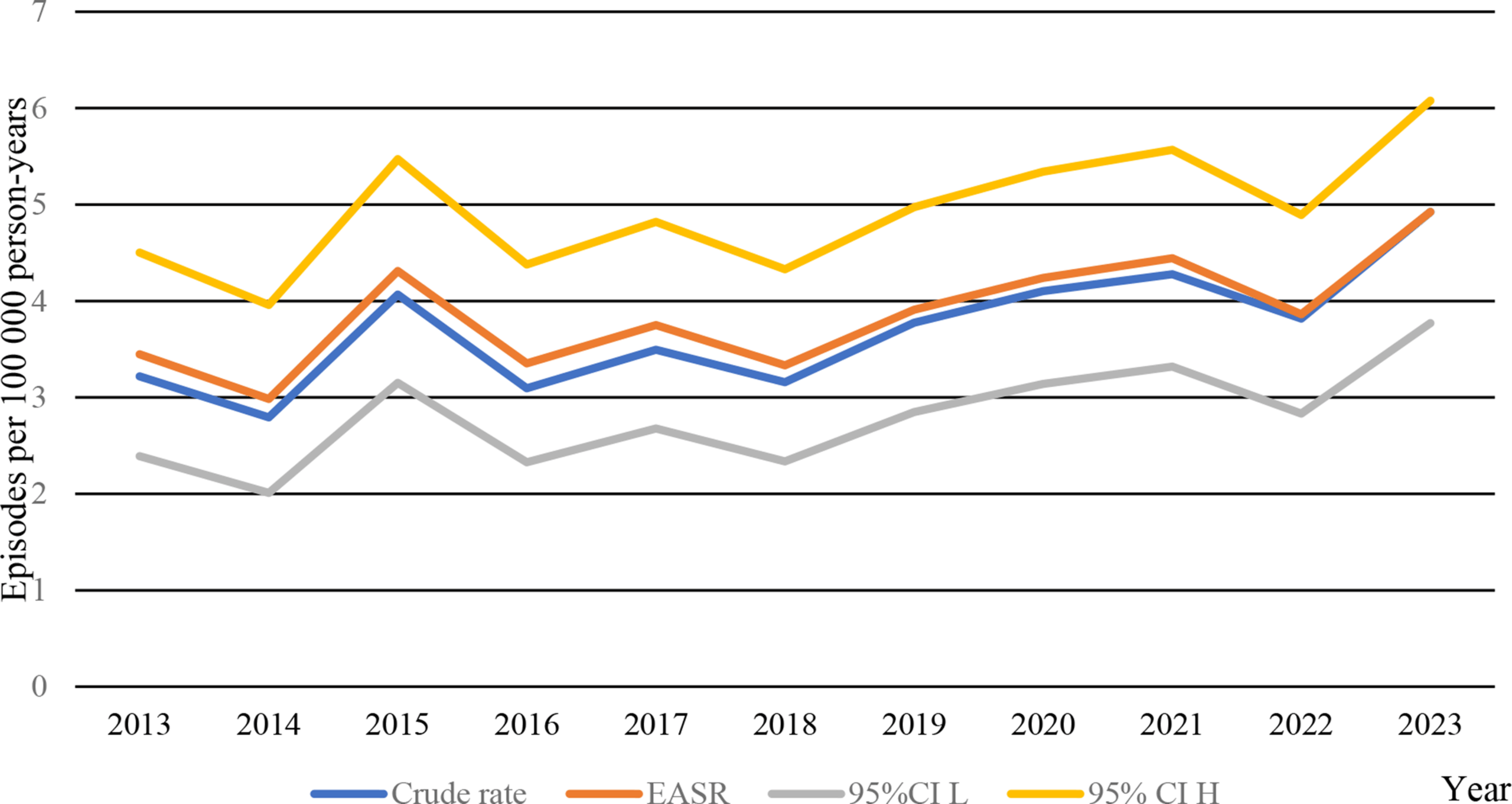
During the study period, there were 554 episodes of Citrobacter spp. BSI in 525 patients. In total, eighteen patients each experienced two episodes of CBSI, four patients had three episodes of CBSI and one patient had four episodes of CBSI. The most common species was Citrobacter freundii complex (47%, n = 261), followed by Citrobacter koseri (42%, n = 233) and Citrobacter non-freundi complex, non-koseri (11%, n = 60). The median age of the included patients was 77 years (range 0-100), and 70% of the patients were men (n = 374). The median CCI was 6 (range 0–15) and 28% (n = 146) of patients were considered immunocompromised (Table 1). Out of all 534 episodes of CBSI, complete medical records were available for 537 episodes (97%).
The age and sex-standardized incidence rate of Citrobacter spp. BSI increased from 3.4 episodes per 100 000 person-years in 2013 to 4.9 episodes per 100 000 person-years in 2023 (Fig. 1).
Incidence of Citrobacter spp. during the study period. EASR = estimated age- and sex standardized rate. CI L = Confidence Interval Low. CI H = Confidence Interval High
The increase was not statistically different from zero, with an APC of 3.2 (95% CI: -0.2% to 6.6%) for the entire study period. Separated into species, the crude rate of Citrobacter koseri and Citrobacter freundi complex increased from 0.9 to 1.9 in 2013, to 2.1 and 2.1 in 2023, respectively (Table A1). While the increase in crude incidence of Citrobacter freundi complex BSI was not statistically different from zero (APC of 2.74 95%CI: -2.3% to 8.1%), the crude incidence of increase of Citrobacter koseri during the study period was statistically significant (APC of 7.56 95%CI: 4.6% to 10.6%). Most BSI occurred in ages 75–84 years (Figure A1).
Resistance rates were statistically significantly higher for Citrobacter freundii compared to Citrobacter koseri for all antimicrobials compared, apart from gentamicin (Table A2). For Citrobacter freundii, resistance rates were 15% (n = 40) for ceftazidime, 7% (n = 18) for ciprofloxacin, 11% (n = 28) for piperacillin-tazobactam, 8% (n = 20) for trimethoprim/sulfamethoxazole and 1% (n = 6) and 2% (n = 9) were resistant against gentamicin and tobramycin, respectively. For Citrobacter koseri, 0.4% (n = 1) strains were resistant towards ciprofloxacin, 2% (n = 4) towards piperacillin-tazobactam and 1% (n = 2) towards trimethoprim/sulfamethoxazole. No strains were resistant towards ceftazidime, gentamicin or tobramycin. No carbapenem-resistant strains were found in the study.
In total, 38% (n = 208) of the BSI episodes were polymicrobial, with 306 pathogens other than Citrobacter detected. The most common microbiological findings in polymicrobial blood cultures other than Citrobacter spp. were Enterococcus spp. (32%, n = 66), Klebsiella spp. (25%, n = 51) and Escherichia coli (24%, n = 49) (Table 2).
According to the medical records, the most common etiology of Citrobacter BSI was urinary tract infection 48% (n = 245). Urine cultures were obtained in 404 (73%) of BSI episodes, of which 373 (92%) were acquired prior to antimicrobials had been initiated. Out of all 404 urine cultures, 187 (46%) were positive for Citrobacter spp. Primary BSI constituted 24% (n = 134) of all Citrobacter BSI, after which intraabdominal source of infection was common 19% (n = 95) (Fig. 2).
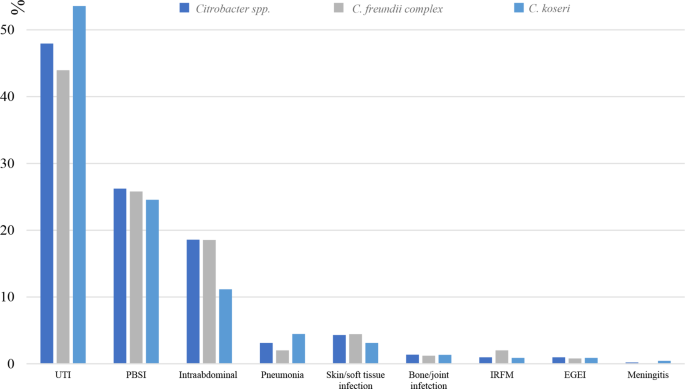
Infection sources for Citrobacter BSI. UTI = urinary tract infection. PBSI = primary bloodstream infection. IRFM = infection related to a foreign material (portacath, central venous catheter or orthopaedic prosthesis). EGEI = endocarditis/graft/endograft infection
In total, fever at blood culturing or within 48 h was present for 387 (70%) episodes and patients reported shivers in 252 (46%) episodes. The median NEWS score when blood cultures were obtained was 4 (range 0–18), the median CRP value was 108 mg/L (range < 4-563) and the median leukocyte count in blood was 12.9 109/L (0.1–92) (Table 1). In nine episodes (2%) of Citrobacter BSI, patients were managed as outpatients, whereas hospitalization was required for all other BSI episodes. In total, 197 (36%) Citrobacter BSI were community acquired, 81 (15%) episodes were nosocomial and 255 (46%) were health care associated (Fig. 3). The median length of stay at hospital was 8 days (range 0-680).
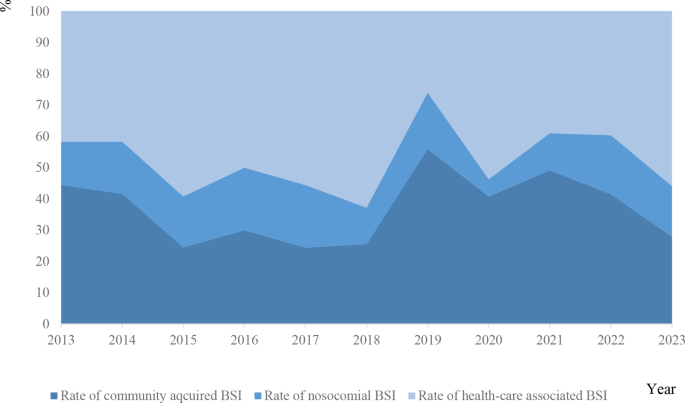
Mode of acquisition of Citrobacter BSI
Out of all 554 Citrobacter BSI episodes, septic shock was seen in 25 (4%) episodes and in 38 (7%) episodes patients required intensive care. The 30-, 90-, 180- and 365-days mortality rates were 12%, 18%, 23% and 25%, respectively (Table 3). Although the 90-, 180- and 365-day mortality rates were significantly higher for C. freundii-complex BSI compared to C. koseri BSI, there was no statistically significant difference in mortality rates between C. freundii complex BSI compared to C. koseri BSI in the Kaplan-Meier estimator (Fig. 4). There was no statistical difference in all-cause mortality within 90 days between patients with one episode of Citrobacter spp. BSI (19%) and patients with two or more episodes (22%, p = 0.74).
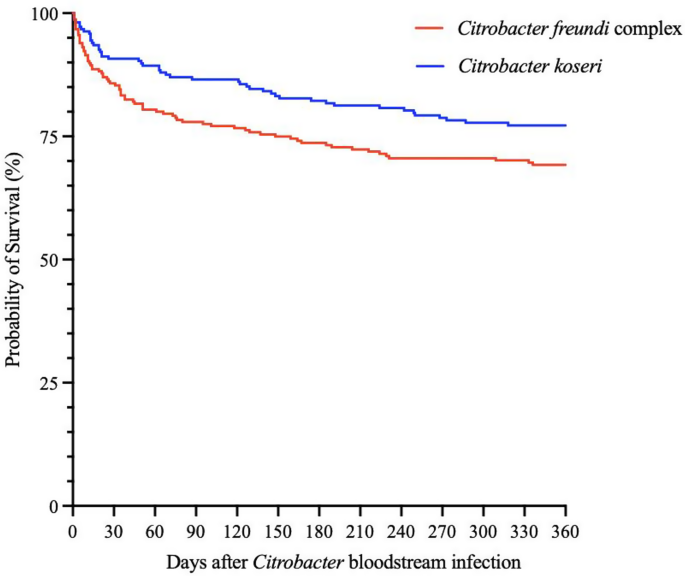
Kaplan-Maier estimates of mortality in C. freundii complex and C. koseri BSI. p = 0.09
There were no differences in age, CCI-score, rate of immunosuppression or substance abuse between patients with BSI caused by C. freundii complex and C. koseri. However, a greater proportion of men suffered from C. koseri BSI compared to C. freundii-complex BSI (p = 0.01). The rate of polymicrobial BSI (p = 0.0001) as well as BSIs with abdominal source of infection (p = 0.03) were greater for C. freundii complex compared to BSIs due to C. koseri. Patients with C. koseri BSI had to a greater extent UTI symptoms (p = 0.005), positive nitrite dipsticks (p = 0.006), and analogous Citrobacter species cultured in the urine (p = < 0.0001) compared to patients with BSI due to C. freundii complex (Table 4).
In the univariate model, female sex, higher CCI score, immunosuppression and longer duration of hospitalisation was associated with death within 90 days of Citrobacter BSI, as was lack of UTI symptoms and non-community acquired infection (Table 5).Similarly, primary BSI and abdominal focus was significantly more common in patients that died within 90 days. In the multivariate model, higher Charlson comorbidity index, immunosuppression, higher CRP, and a urinary tract focus, were independently associated with 90 days mortality, while age, sex, septic shock, polymicrobial culture and fever were not (Table 6).

On the Death of Dr Robert Levet by Samuel Johnson
Condemned to Hope’s delusive mine
As on we toil from day to day,
By sudden blast or slow decline,
Our social comforts drop away.
Well tried through many a varying year,
See Levet to the grave…

Neolithic people seem to have enjoyed chewing gum just as much as a bored kid in calculus. Their discarded wads are even revealing surprising details on human life as far back as 6,000 years ago.
Tar brewed from the bark of a birch tree is the…
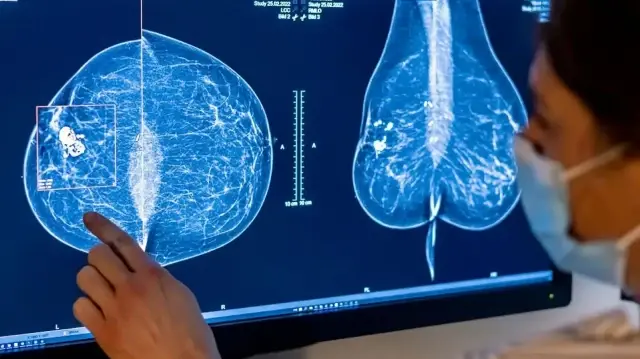
Researchers at the University of Galway in Ireland have made a significant breakthrough in understanding how bowel cancer evades the body’s natural defenses, discovering a method to reactivate the immune system against the disease. The study…

Published: 12:52 pm, 20 October 2025

The contracts for the two high-cube container-optimised newbuilds were signed with the Fujian Mawei Shipyard in China, with the total investment amounting to US$66m. Delivery of the two vessels is scheduled for the second half of 2027. MPCC also holds options for further units, enabling future scalability in line with market opportunities.
The new vessels feature a highly advanced, fuel-efficient design optimised for operations in Northern Europe and its narrow fairways, whilst offering further efficiency advantages, even compared to existing ECO designs in this market segment. The order is part of MPCC’s strategic fleet modernisation programme aimed at increasing energy efficiency and minimising regulatory and environmental risks.
Oslo-based MPCC is a leading container ship owner with a focus on small to medium-sized vessels. It primarily owns and operates a portfolio of container ships serving regional trade routes under long-term charter agreements.
The WFW Maritime team that advised MPCC was led by Hamburg Corporate Partner Dr Christian Finnern, supported by Associates Maximilian Hennig and Bjarne Ruthke. Hamburg partner Dr F. Maximilian Boemke advised on regulatory matters, whilst London Partners Joe McGladdery and Charles Buss in advised on English law.
Christian commented: “It was a pleasure to advise MPCC on this strategic step. The transaction is exemplary for fleet modernisation and market positioning – and at the same time reflects the dynamics of an industry that calls for strategic decisions and legal clarity more than ever. Our maritime transaction expertise enables us to advise on such complex projects in a targeted and forward-looking manner”.

Gas chromatography (GC) techniques are increasingly central to forensic chemical analysis.
In this article, we draw on insights from three researchers whose work illustrates the advances being made: Petr Vozka (California State University, Los…

Three-time table tennis Olympic gold medallist Ding Ning has been appointed as principal of the Xiannongtan Sports School in Beijing.
The 35-year-old refined her skills at the prestigious institution, which nurtured other great table tennis stars…